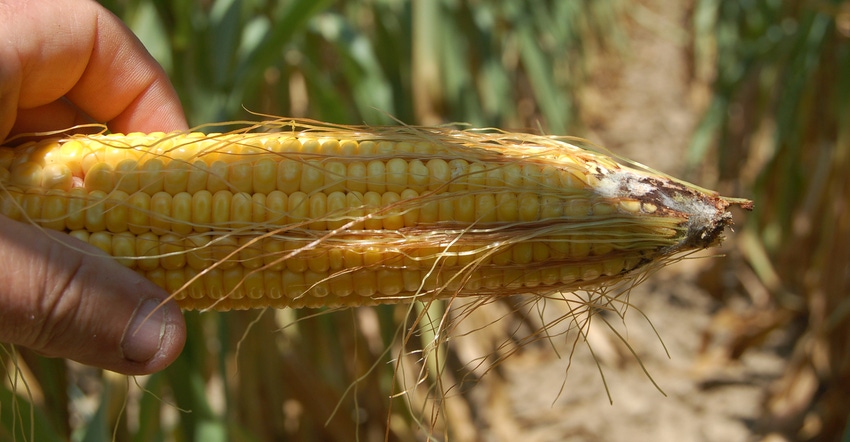July 26, 2022

Green plants are amazing wonders of nature! They have microscopic windows called “stomata,” which can open and close as needed. Under normal conditions, these windows allow plants to exchange gases with the atmosphere. During photosynthesis, plants absorb carbon dioxide from the air through these windows, and get water and nutrients from the soil through roots.
With the help of sunlight and heat as the energy source, plants combine the ingredients of carbon dioxide, water, nitrogen, phosphate, potassium, sulfur and micronutrients such as iron, zinc and magnesium to create oxygen, sugars, starches, oils, proteins, cellulose, lignin and much more.
What happens in years like 2022 when conditions aren’t normal? Instead, it’s too hot, too dry and in a few areas, even too wet. Plants use these same windows as a defense mechanism against heat and drought.
Natural defense
When corn leaves curl up during the day, they’re closing stomata to reduce transpiration and respiration rate. These plants are under stress and are not very productive.
During the day, plants absorb carbon dioxide and release oxygen into the atmosphere through stomata. During the night, plants respire and don’t release any oxygen. Also at night, plants slow down and deposit the products of photosynthesis within themselves where needed. When it’s too warm at night, respiration does not occur normally.
After pollination is complete, sugars, starches and proteins are deposited in kernels. These kernels, or seeds, are the offspring of corn plants. Like all organisms, corn plants have only one objective: Produce as many viable progenies as they can.
Higher temperatures speed up the biological processes and shorten the life span of plants. Studies show that corn performs best at moderate temperatures and does not produce well when it is too hot. Why is that?
Protecting babies
During very hot days and hot nights, plants use up some of the biomass in wasteful respiration. The respiration rate increases rapidly as temperatures increase, resulting in loss of carbohydrates manufactured during the day and hot nights. This results in lower yields.
Ideally, corn likes the thermostat set at about 86 degrees F during the day and 65 degrees at night. During periods of intense stress, the rate of photosynthesis decreases. If that happens during grain fill, plants redirect stored photosynthates to the grain at the expense of leaves and stalks. A plant sacrifices other parts of itself to fill the needs of growing kernels, its offspring. This can result in weakened stalks and cause lodging.
A stalk pinch test can determine which fields should be harvested first. The black layer may form earlier in these fields, resulting in smaller kernels and lower yields. Understanding the needs of corn plants can help produce better crops, even in tough years.
Nanda is director of genetics for Seed Genetics Direct, Jeffersonville, Ohio. Email [email protected] or call 317-910-9876. Please leave a message.
About the Author(s)
You May Also Like






